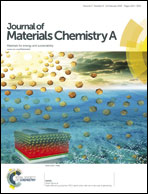Photocatalytic degradation of organic pollutants by shape selective synthesis of β-Ga2O3 microspheres constituted by nanospheres for environmental remediation
Abstract
A potential single crystalline photocatalyst β-Ga2O3 with unique spherical morphology has been synthesized using a surfactant assisted hydrothermal process. Organic additive triblock co-polymer pluronic F127 was used as a soft template. The morphology of the material was investigated using scanning electron microscopy and it was confirmed that the nanospheres self-assembled to form microspheres with diameters in the range ∼1–3 μm. The crystal phase and chemical composition of the β-Ga2O3 microspheres were revealed by X-ray diffraction and X-ray photoelectron spectroscopy. Structural characterization exhibits the monoclinic phase of the microspheres with preferential growth along the [111] direction. A plausible mechanism has been proposed to understand the formation of microspheres. The optical absorbance spectrum showed an intense absorption feature in the UV spectral region with a bandgap energy of 4.6 eV. The Brunauer–Emmett–Teller specific surface area was found to be 82 m2 g−1. The photocatalytic activity of the material has been investigated for the degradation of model organic pollutants Rhodamine B and methylene blue under ultraviolet light irradiation. The photocatalytic mechanism towards the degradation of organic dyes has also been proposed.


 Please wait while we load your content...
Please wait while we load your content...